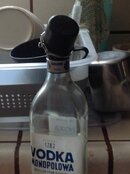fsardone
Solo Diver
The CMF physics requires two things:Well, in that case, assuming the environmental seal stayed intact and deformed with depth, the relative IP provided by the unit probably dropped 5-12 psi for every 33fsw, because the environmental seal was preventing transmission of ambient pressure to the main diaphragm. That would make it a lot easier on the solenoid, lol. But I would expect the first stage to potentially provide inadequate O2 below 250 ft or even less, both via a solenoid or an orifice. I'm not too sure of CMF physics at low pressures, but it seems likely.
- constant density (hence constant pressure)
- pressure at least twice than ambient.
The second is necessary to have sonic flow (and therefore constant speed since the speed of sound is only function of the (absolute) temperature which in the range we can dive we can assume constant 273-300K ).
The first one gives you the constant mass flow=density*speed*surface of the orifice.
From the gas state: PV=nRT for density we can simplify in n/V and so P/RT so if pressure goes down at a certain point you loose sonic flow and always you loose mass. If pressure increases you increase mass flow and never loose sonic flow.
Cheers




